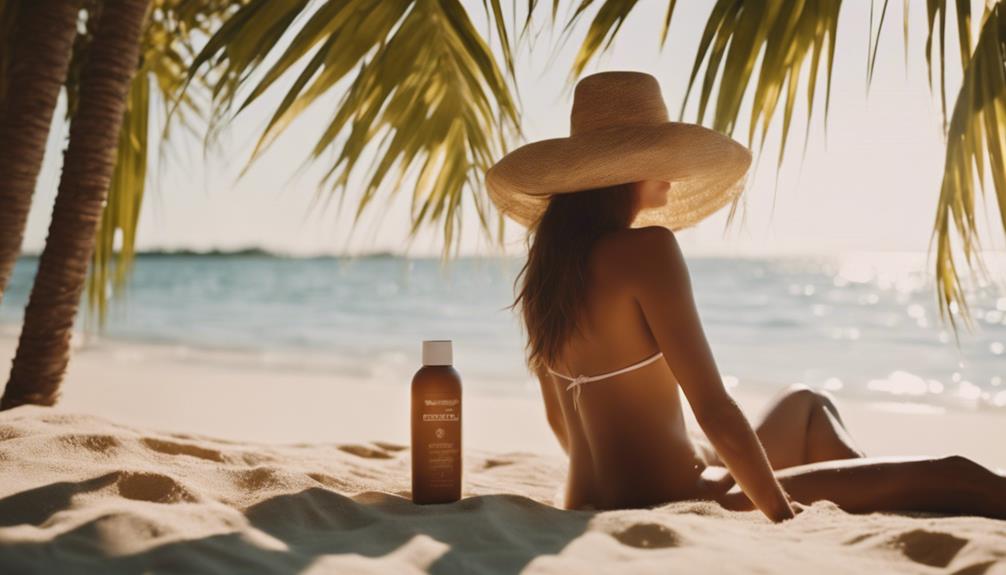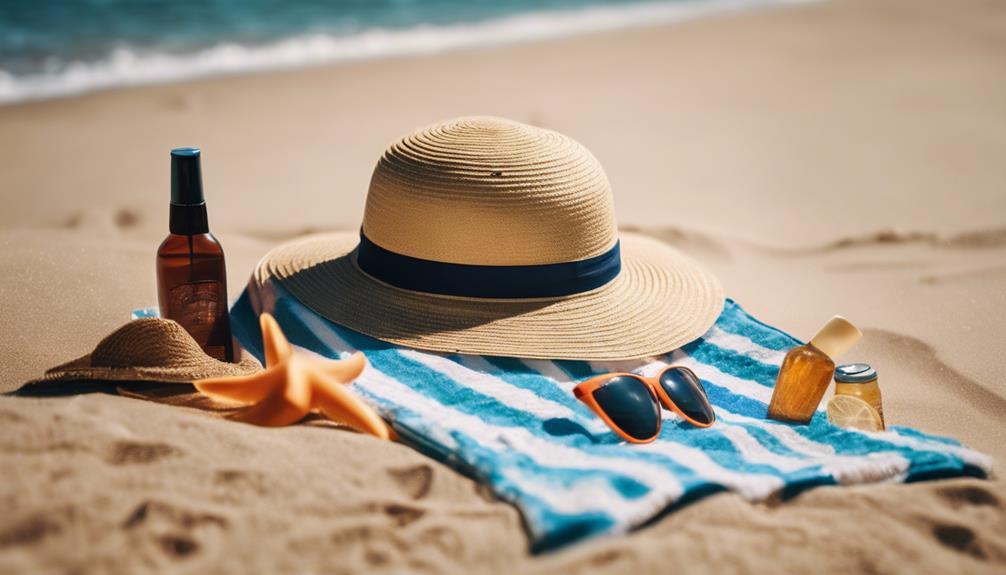To keep your skin safe while tanning, it’s important to first determine your skin type and the UV index in your area. Using indoor tanning lotions can help moisturize your skin, and don’t forget to protect your eyes with goggles. Before your tanning session, make sure to exfoliate and moisturize your skin, paying special attention to dry areas. Monitor your tanning time carefully, adjusting according to your skin’s needs and watching for any signs of overexposure, such as redness. After tanning, continue to keep your skin hydrated and avoid harsh chemicals. If you’re interested in learning more about effective tanning tips and methods, there are plenty of resources available for further exploration.
Key Takeaways
- Check your local UV index before tanning to assess risk and plan sessions accordingly.
- Always wear protective goggles during tanning to safeguard your eyes from harmful UV rays.
- Use indoor tanning lotions to hydrate your skin and enhance your tan results.
- Monitor your skin for signs of overexposure, such as redness or discomfort, and adjust tanning frequency as needed.
Tanning Safety Guidelines
To guarantee a safe tanning experience, always check the local UV index and adjust your sessions based on your skin's tolerance to UV exposure.
Understanding your skin type is essential; it helps you determine how long you can safely tan without risking damage.
Follow guidelines from the Smart Tan Network, as they provide valuable insights on minimizing skin cancer risks.
Use indoor tanning lotions to keep your skin hydrated and enhance your tan.
Remember to protect your eyes by wearing goggles, and avoid using contact lenses during tanning sessions.
Selecting the Right Equipment
Choosing the right tanning equipment is just as important as understanding your skin's tolerance and safety guidelines.
When selecting a tanning bed, opt for one that maximizes UVA exposure while minimizing UVB, which reduces your risk of skin damage. Make sure you always wear protective goggles to shield your eyes from harmful rays. Look for beds equipped with features like adjustable timers and facial tanners for a more customized experience.
If you're considering spray tanning, invest in high-quality equipment that delivers an even application. Remember to choose indoor tanning lotions that hydrate and enhance your tan, giving you the best results while keeping your skin protected.
With the right equipment, you can enjoy a beautiful, safe tan.
Preparing Your Skin

Exfoliating your skin before tanning guarantees a smooth, even application and enhances your overall tan.
Start by using a gentle scrub to remove dead skin cells, focusing on areas like elbows, knees, and ankles where dryness tends to accumulate.
Next, hydrate your skin with a good moisturizer to maintain moisture levels, but avoid oil-based products as they can create a barrier against the tanning solution.
Make sure your skin is clean and free from any lotions or perfumes that might interfere with the tanning process.
By preparing your skin properly, you'll achieve a more radiant and longer-lasting tan.
Managing Tanning Sessions
When managing your tanning sessions, it's important to tailor the duration and frequency based on your skin type and the UV intensity to guarantee safe and effective results.
Start by checking the local UV index to understand the risks before you tan. If you have fair skin, limit your sessions to shorter durations, while those with darker skin may handle longer sessions.
Aim to tan every 1-3 days to build your tan gradually. Always monitor your skin's response during and after sessions, looking out for signs of overexposure like redness or discomfort.
Caring for Your Skin Post-Tan

After enjoying your tanning session, it's important to focus on post-tan care to keep your skin hydrated and maintain that sun-kissed glow.
Start by applying a hydrating lotion free from harsh chemicals and fragrances to nourish your skin. This helps prevent dryness and enhances your tan.
Don't forget to drink plenty of water, as staying hydrated aids skin recovery and keeps your color looking fresh.
Avoid using outdoor tanning products after your session, as they can disrupt your tan's integrity.
Finally, treat your skin gently; skip scrubbing or exfoliating for a few days to allow your melanocytes to recover.
With these steps, you'll extend the life of your tan while keeping your skin healthy and radiant.
Identifying Overexposure Symptoms
Recognizing the signs of overexposure is essential for maintaining healthy skin and preventing serious damage. You should pay close attention to how your skin reacts after tanning.
Here are some key symptoms to watch for:
- Redness and Discomfort: If your skin feels hot or looks red, it's a sign you've had too much UV exposure.
- Blistering or Peeling: Severe overexposure can lead to these symptoms, indicating your skin needs immediate care.
- Dizziness and Nausea: These can signal excessive heat or UV exposure, and you should take action right away.
If you notice any of these signs, it's vital to reassess your tanning routine to protect your skin effectively.
Exploring Healthy Tanning Alternatives

Exploring healthier tanning alternatives can help you achieve that sun-kissed glow without risking your skin's health. Consider options like self-tanners, spray tans, or bronzing lotions, which provide instant color without UV exposure. These products allow you to control the shade and maintain a natural look.
| Tanning Alternative | Benefits | Tips |
|---|---|---|
| Self-Tanner | Long-lasting, customizable | Exfoliate before applying |
| Spray Tan | Quick application, even tone | Choose a reputable salon |
| Bronzing Lotion | Buildable color, daily use | Apply on clean, dry skin |
How Can Tanning Lotion Help Protect My Skin While Tanning?
Tanning lotion can help protect your skin while tanning by providing a layer of moisture and nutrients. This can help prevent the harmful effects of UV rays and extend the lifespan of tanning lotion. By keeping your skin hydrated and nourished, tanning lotion can promote a healthier tanning experience.
Conclusion
By following these smart tanning tips, you can achieve that coveted glow while safeguarding your skin's health.
Isn't it worth taking the time to understand your skin and its needs?
Remember to stay informed about UV levels, protect your skin with the right products, and care for it after tanning.
With a little knowledge and preparation, you can enjoy the sun responsibly and radiate confidence all season long.
Your skin deserves the best care possible!









